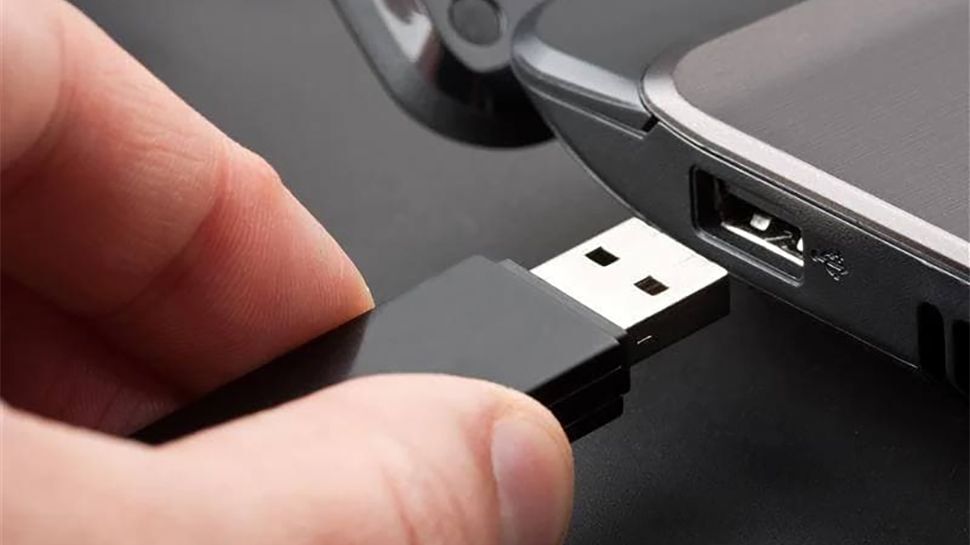The year is 2245. The heirs finally locate a working, antique reader that can handle the ancient USB key, hoping to find great-great-grandpa’s crypto-wallet or the pin-code to a long-lost Maltese bank account.
Instead, they find a 4-bit, VGA-quality scan of Miss October.
An actual book stores more data than that and for longer. At that point, why not just etch the data onto a metal plate or something? 8K is only a few pages of text at 12pt. It could easily fit onto two sides of a small-ish metal plate, etched in 8pt or so, and it would last, potentially, for millennia.
I think the idea is to improve upon this tech so the capacity would become larger.
It’s FRAM, which has been around for ages. The problem is its prohibitive cost— hence the 8k.
This can be rewritten many, many, many times.
What’s the practical benefit of that? If the point is long-term storage, rewriting isn’t a priority (or possibly even a need). And this isn’t designed for capacity.
It’s so I can exchange fart jokes with my great great great great grandson via a magic USB port a la The Notebook, assuming that’s how it works, idk, never actually seen the movie.
I usually update my backups with new TOTP or other cryptographic keys every few months. Sometimes every few days (when I generate new keys).
Why even invent the car when horse so much faster?
You wouldn’t use a car to race in the Kentucky Derby
Maybe you wouldn’t
You’d make a bunch of jockeys mad
Fine, I’ll drive from the roof like a jockey
I absolutely would
idk, its much more resistant to floods.
Than an etched metal plate?
Yes.
USB drives don’t mix well with water
Why do you say that? I’ve put several through a washing machine and gone swimming with mine. Electronic usually are fine with water. Batteries are not.
Just let it dry out before passing a charge through it, and it works fine. Not so easy with paper.
Not so easy with paper.
I had suggested a metal plate, not paper.
So your 8KB of data will last forever, but what about the firmware required to access it running on flash?
In 200 years, AI will hack it for you, but you’ll need a dozen antique dongles to get from USB-Z to A.
As the old saying goes: What could a person need more than 8KB for?
32KB*
I’m going to get one for my favicon.
What’s the favicon?
Then I said “I don’t know, what’s the favicon with you?”
The little icon you see next to a URL on desktops.
Nah I just wanted to see this guy’s favicon. I know what it is though.
Basically the only file that’s (sometimes) less than 8kb
Kinda funny, I was just writing about archival media this morning. Verbatim makes DVDs & Blue Rays that last ~100 years, and M-DISC makes ones that’ll last ~1000 years. And the Verbatim Blu Rays run ~$0.036 per gig.
Where can I read about the testing that goes into these claims?
I’m far from an expert, but anything on standards JIS X6257 / ISO 18630 would probably be a good start. It’s an open standard for 100+ year discs.
Otherwise probably best to look into accelerated aging studies. For technology that’s less that 100 yrs old to claim 100 or 1000 is a bit uncertain but accelerated aging is probably the closest to a best guess. I recall skimming over a third party lab saying Verbatim gold foil archival DVDs were estimated to last 30-120 years depending on storage methods and luck, but never saved the link.
I’m sure storage environment matters though?
Oh yeah, stick it in the sun or a damp box and either will probably be bad in weeks instead of decades or centuries. But supposedly they’ll meet those lifespans good at room temp
I use M-Discs too
Somewhat better than this useless USB thingy (from Temu?)
Summary by Andisearch
Researchers have developed a new quartz coin that can store 360TB of data for 14 billion years. This is a significant improvement from the previous quartz glass storage, which could only store data for 300 million years. The technique uses femtosecond laser pulses to write data in the 3D structure of quartz at the nanoscale. This makes it possible to store the whole of human history in a small coin-sized device. The storage system is also very durable, able to withstand high temperatures. This technology could potentially serve as a means of archiving important information for future generations or even extraterrestrial beings.
Will the chip actually last that long though? I would have expected a ceramic package with gold plated leads, not a plastic SOP-8.
You mean my 2GB Kingston that I bought in 2007, that I rarely use anymore won’t last me 200 years? Damn…
The other flash chip storing program code for the rp2040 will decay before then making the longevity marketing dumb
Why you should buy two! /s
Kind of hard to return this after 195 years if it fails.
Hopefully its open source and you get all the schematics needed to repair it
Just one small issue with that… I probably don’t live for another 195 years. :)
Oh, well, I mean your spawn
what about physical damage. or emp or something. I feel like that will be a problem well before 200 years.
Mold is actually the biggest concern with the most popular archival format LTO. EMPs aren’t that much of a concern. Bit flips and bit rot are your main concerns traditionally when using flash for archival storage. It’s recommended if you go the flash route to keep your array hot (ie powered on) and use a file system with data scrubbing capabilities such as ZFS.
Is the ZFS header bigger than 8kb?
future firmware updates are expected to include encryption features
Just use GnuPG. SMH
I don’t think that would fit.
I… think good old paper, metal plates and carved stones are better technology than this. Unless there is a way to store video and audio for that much long term technology, mechanical methods are far superior for photos and text.
I’m pretty sure my PGP keyring is bigger than that












